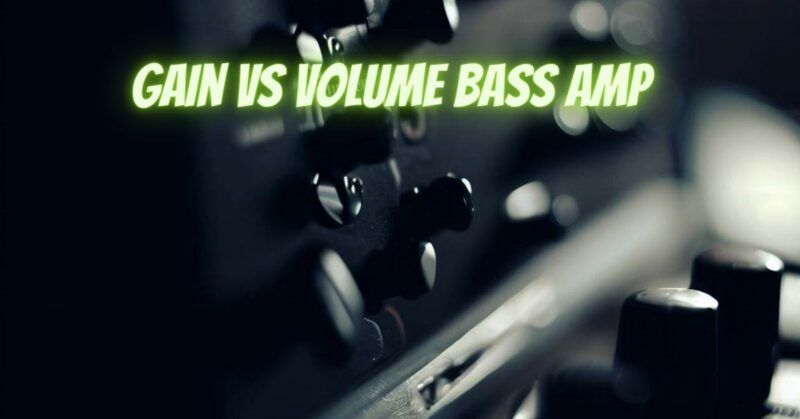When it comes to shaping the tone and volume of your bass guitar, understanding the intricacies of your bass amplifier’s controls is essential. Two primary controls, gain and volume, play crucial roles in determining your bass guitar’s sound output. In this article, we’ll explore the differences and functions of gain and volume controls in a bass amplifier, helping you achieve the desired tone and volume levels for your bass playing.
Understanding Gain Control
- What is Gain? Gain is an amplifier control that adjusts the input sensitivity or the level at which the amplifier amplifies the incoming signal. It primarily affects the amount of distortion or overdrive in your bass guitar’s sound. Think of gain as the control that sets the stage for the character and grit of your bass tone.
- How Does Gain Work? Turning up the gain control increases the amplification of the input signal. In a bass amplifier, this means that as you raise the gain, your bass guitar’s output will be driven harder, resulting in a more saturated and distorted sound. Lower gain settings yield cleaner tones with minimal distortion.
- Application of Gain:
- Clean Tones: Lower gain settings are suitable for achieving clean, pure bass tones, ideal for genres like jazz or funk.
- Overdrive and Distortion: Higher gain settings introduce overdrive and distortion, suitable for rock, metal, or any style where a gritty bass sound is desired.
Understanding Volume Control
- What is Volume? Volume, often labeled as “master volume” or simply “volume,” adjusts the overall output level of your bass amplifier. It determines how loud your bass guitar will be when amplified.
- How Does Volume Work? The volume control regulates the power level of the amplified signal. Turning up the volume increases the overall loudness of your bass guitar, regardless of the amount of gain applied. It essentially controls the output level of your amplifier.
- Application of Volume:
- Loudness Control: The volume control enables you to set the desired volume level for your bass, making it suitable for practice, performance, or recording.
- Tone Shaping: By controlling the overall output level, the volume knob indirectly affects the perceived balance of your bass tone, including the presence and intensity of overdrive or distortion.
Comparing Gain and Volume
- Gain vs. Volume:
- Gain: Primarily affects the character and distortion of your bass tone.
- Volume: Determines the overall loudness of your bass amplifier.
- Relationship Between Gain and Volume:
- Increasing the gain while keeping the volume low will result in a distorted but relatively quiet sound.
- Increasing both the gain and volume will result in a louder and more distorted sound.
- Tone Shaping:
- Gain controls the texture and grit of your bass sound.
- Volume controls the overall loudness without altering the tone significantly.
- Usage in Different Styles:
- Gain is often used in rock, metal, and genres that require distorted bass tones.
- Volume is used in all styles to control the overall loudness, making it essential for practice, performance, and recording.
In summary, gain and volume controls in a bass amplifier serve distinct but complementary functions in shaping your bass guitar’s sound. Gain controls the character and overdrive of your tone, while volume controls the overall loudness. Understanding the roles of these controls allows you to tailor your bass sound to suit your playing style and musical preferences. Whether you’re seeking a clean, crisp jazz tone or a roaring, distorted rock sound, mastering gain and volume control is essential for achieving your desired bass guitar sound.


